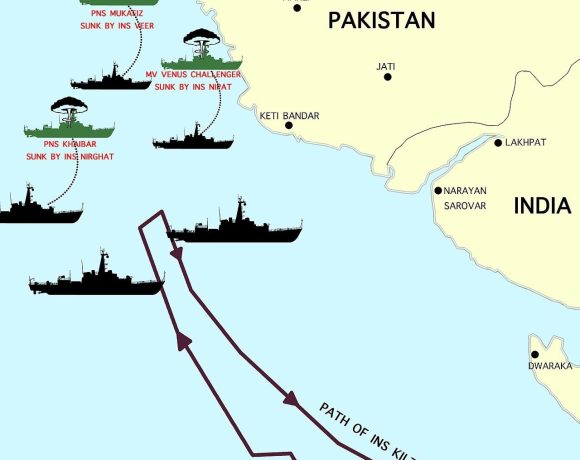
The New U.S. Trade War: A Global Economic Shakeup and Its Far-Reaching Implications
In an aggressive move that could redefine global trade, the United States has imposed new tariffs on Canada, Mexico, and China, citing concerns over trade imbalances, illegal immigration, and supply chain security. These tariffs—25% on most imports from Canada and Mexico, and 10% on imports from China—represent a major escalation in trade tensions, with serious repercussions not just for the targeted countries but for the global economy as a whole.
While the U.S. administration presents these tariffs as a strategy to revive American manufacturing and reduce dependency on foreign imports, the economic realities are far more complex. These new trade barriers could increase costs for American consumers, disrupt critical supply chains, and provoke retaliation from affected nations, setting the stage for an extended global economic conflict.
To truly understand the impact of these tariffs, we must examine why they were introduced, how they will affect both the U.S. and its trade partners, and what this means for countries like India that stand to gain from this shifting landscape.
—
Why Has the U.S. Imposed These Tariffs?
The official rationale behind the U.S. decision to impose steep import tariffs falls into three main categories:
1. Addressing Illegal Immigration and Drug Trafficking (Mexico & Canada)
The U.S. government claims that Mexico has failed to curb illegal immigration and the smuggling of drugs like fentanyl across its border.
Canada, while not a direct source of illegal immigration, is included in the tariffs due to concerns over drug smuggling and security loopholes.
By imposing tariffs, the U.S. hopes to pressure both countries into taking stricter measures to prevent these issues.
2. Reducing Trade Deficits and Promoting U.S. Manufacturing (China)
The U.S. imports significantly more from China than it exports, leading to a large trade deficit.
The Trump administration believes tariffs will make Chinese goods more expensive, encouraging American companies to produce domestically.
This follows a broader strategy to counter China’s global economic influence, especially in technology, electronics, and renewable energy.
3. Reshoring Supply Chains & Reducing Foreign Dependence
The COVID-19 pandemic exposed the vulnerability of U.S. supply chains, particularly in semiconductors, pharmaceuticals, and industrial components.
Tariffs are seen as a way to incentivize U.S. companies to move production back to American soil or to “friendly” trade partners like India and Vietnam.
While these goals may seem ambitious, the economic consequences could backfire on the U.S. itself, while simultaneously harming its trade partners.
—
The U.S. Economy: A Double-Edged Sword for Businesses and Consumers
At first glance, these tariffs may appear to protect American industries and jobs, but the reality is far more complicated.
1. Higher Prices for American Consumers
The U.S. heavily relies on imported cars, electronics, furniture, and consumer goods.
Tariffs will increase costs for businesses, who will pass these costs onto consumers.
Expect higher prices for smartphones, laptops, cars, household appliances, and food items imported from these countries.
2. Supply Chain Disruptions Will Hurt Manufacturing
Many U.S. industries rely on Canadian aluminum, Mexican auto parts, and Chinese semiconductors.
If alternative suppliers are not found quickly, these industries will face delays and increased costs, reducing competitiveness in global markets.
3. Job Losses Instead of Job Growth
While the U.S. hopes to bring back manufacturing jobs, companies are more likely to shift production to Vietnam, India, or Mexico rather than return to the U.S.
Automakers, tech firms, and retailers will face higher operational costs, forcing layoffs and cutbacks.
4. Retaliation from Trade Partners
Canada, Mexico, and China are expected to impose counter-tariffs on U.S. goods.
This could hurt American exports in sectors like agriculture (soybeans, corn, wheat), aviation (Boeing aircraft), and industrial machinery.
—
How Will These Tariffs Hurt Canada, Mexico, and China?
While the U.S. will face economic consequences, the reverse impact on its trade partners could be even more severe.
🇨🇦 Canada: An Economy Heavily Dependent on the U.S.
75% of Canadian exports go to the U.S., making it extremely vulnerable.
Biggest industries affected:
Energy: The U.S. buys 50% of Canada’s crude oil. Losing this market would hurt Canadian oil companies like Suncor and Cenovus.
Auto industry: Canadian suppliers like Magna International depend on the U.S. car market.
Aluminum & Lumber: Canada is the largest aluminum and timber exporter to the U.S.
🇲🇽 Mexico: The Biggest Casualty in This Trade War
80% of Mexican exports go to the U.S., making Mexico the most vulnerable economy.
Biggest industries affected:
Automotive: Mexican factories supply Ford, GM, and Toyota.
Electronics: Mexico produces TVs, medical devices, and computers for U.S. companies like Intel and HP.
Agriculture: Mexican beer (Corona), avocados, and tomatoes will suffer if U.S. demand drops.
Potential job losses: Over 1 million Mexican jobs are at risk.
🇨🇳 China: A Short-Term Shock, But Long-Term Adaptation
China relies less on the U.S. than Canada and Mexico but still faces economic pressure.
Biggest industries affected:
Technology: Apple, Dell, and HP may shift manufacturing away from China.
Machinery & Electronics: The U.S. is a key buyer of Chinese industrial equipment.
Consumer Goods: Clothing, toys, and home appliances will see declining U.S. demand.
China’s Response:
Expand trade with India, Russia, ASEAN, and Africa.
Boost self-reliance in semiconductors and AI.
Retaliate with tariffs on U.S. agriculture and Boeing aircraft.
—
India: A Golden Opportunity Amidst the Trade War
As the global trade landscape shifts, India is uniquely positioned to benefit from this economic realignment.
How India Can Gain From the U.S. Tariffs
✔️ Increased Foreign Investment:
U.S. firms like Apple, Tesla, and Intel are already moving manufacturing to India.
✔️ More Agricultural and Energy Exports:
India can supply food products and oil to fill the gaps left by Canada and the U.S.
✔️ Tech and Electronics Growth:
India can replace China in semiconductor and electronics production under the “Make in India” initiative.
What India Needs to Do to Be Prepared
✔️ Improve infrastructure and logistics to attract more foreign manufacturers.
✔️ Negotiate better trade deals with the U.S., Canada, and Mexico.
✔️ Expand renewable energy and semiconductor production to attract companies shifting away from China.
—
Conclusion: A Trade War That Benefits No One?
While the U.S. aims to revive domestic industries, these tariffs will likely increase consumer prices, disrupt supply chains, and provoke retaliation.
✅ Winners:
India, Vietnam, and ASEAN countries as alternative suppliers.
Middle Eastern oil exporters replacing Canadian energy.
❌ Losers:
Mexico, due to its heavy dependence on U.S. trade.
Canada’s auto, energy, and lumber sectors.
China, though it can adapt by strengthening ties with Asia and Europe.
This new trade war is not just an economic dispute—it is a battle over global influence and economic power. The world is watching to see who will emerge stronger, and who will suffer the most.


















